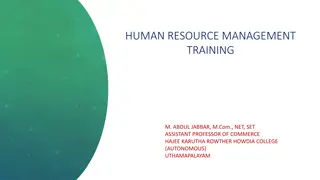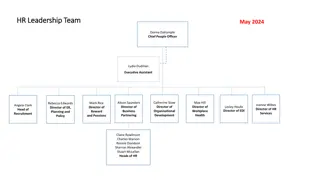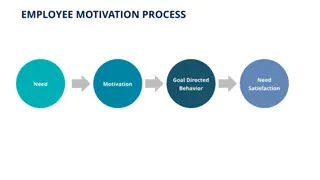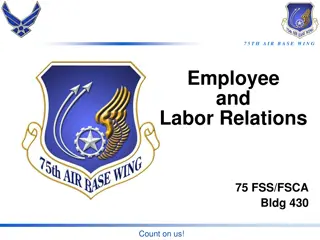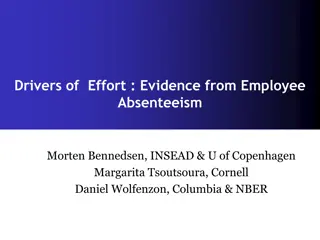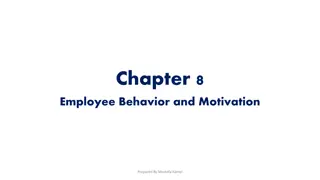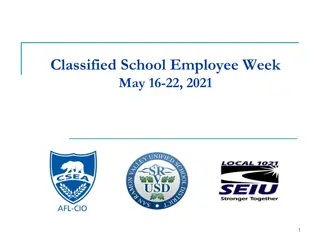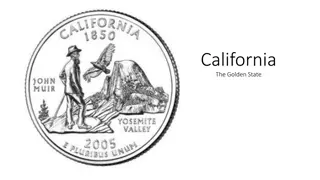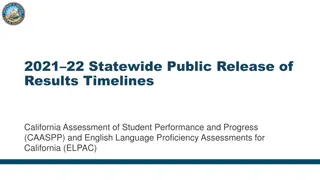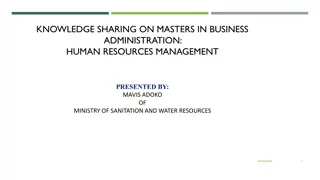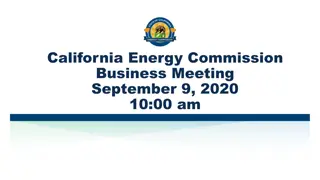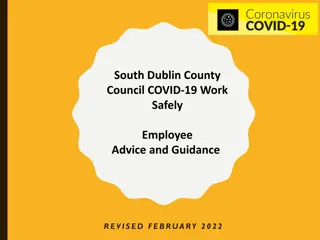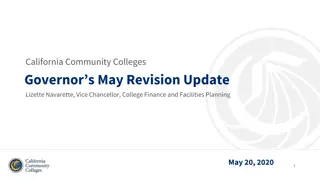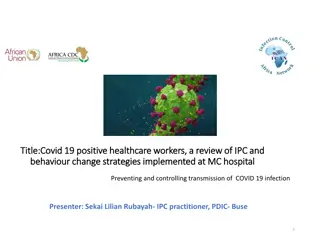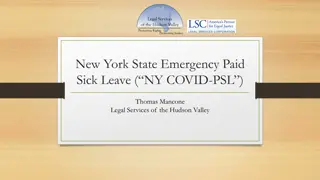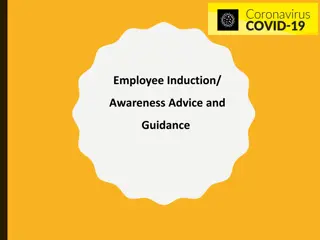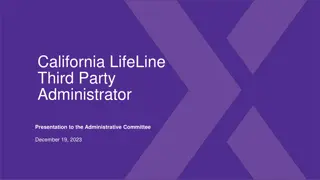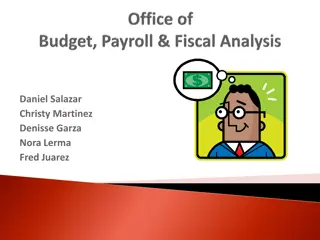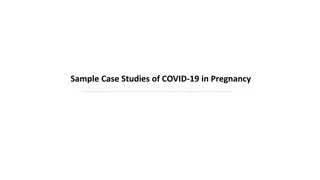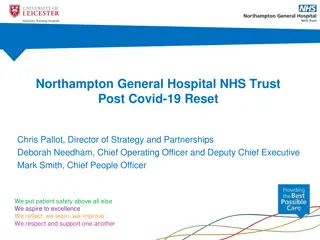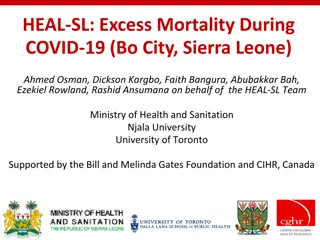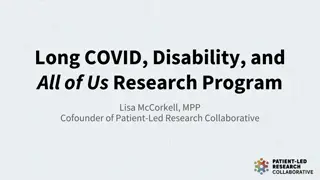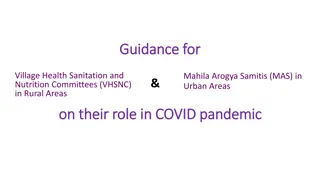Employee Training Presentation on COVID-19 in California
This presentation, provided by Cavignac & Associates Insurance Brokers, aims to educate employees on COVID-19 signs, symptoms, and preventive measures. It covers the overview of COVID-19, signs, symptoms, when to seek medical attention, and how the virus spreads. The content emphasizes personal hygiene, social distancing, and sanitization in the workplace to ensure the safety of employees and others. It also highlights the importance of recognizing emergency symptoms and seeking appropriate medical care when needed.
Download Presentation

Please find below an Image/Link to download the presentation.
The content on the website is provided AS IS for your information and personal use only. It may not be sold, licensed, or shared on other websites without obtaining consent from the author. Download presentation by click this link. If you encounter any issues during the download, it is possible that the publisher has removed the file from their server.
E N D
Presentation Transcript
COVID-19 Employee Training Presentation California Provided by: Cavignac & Associates Insurance Brokers
The Purpose of This Presentation Educate employees on the signs and symptoms of COVID-19 and when to seek medical attention. Detail how COVID-19 spreads and ways employees can protect themselves and others. Highlight workplace procedures related to personal hygiene, social distancing, sanitization and similar precautionary measures.
COVID-19 Overview COVID-19 is a respiratory disease caused by a coronavirus named SARS-CoV-2. Coronaviruses are a large family of viruses that are common in people and many different species of animals, including camels, cattle, cats and bats. COVID-19 symptoms can range from mild (or no symptoms) to severe illness. In some cases, COVID-19 can be deadly.
Signs and Symptoms of COVID-19 According to the Centers for Disease Control and Prevention (CDC), COVID-19 can have a wide range of symptoms. These symptoms may appear 2-14 days after an individual contracts the virus. These symptoms include, but are not limited to, the following: o Fever o Cough o Shortness of breath or difficulty breathing o Chills o Repeated shaking o Muscle pain o Headache o Sore throat o Loss of taste or smell
When to Seek Emergency Medical Attention Certain COVID-19 symptoms can be life-threatening, and it s important to seek emergency medical care if you are experiencing: oTrouble breathing oPersistent pain or pressure in the chest oConfusion oInability to wake or stay awake oBluish lips or face Please note, this list does not include all possible COVID-19 symptoms. Call your medical provider if you are experiencing any other symptoms that are severe or concerning to you. For additional guidance on when to seek medical care, use the CDC s self- assessment tool.
How COVID-19 Spreads According to the CDC, COVID-19 is primarily spread person-to-person. Examples of how COVID-19 can spread include: oBetween people who are in close contact, such as 6 feet or closer to each other. oThrough droplets which are passed into the air through sneezing or coughing. oBy individuals who are not showing any symptoms. oIn instances where an individual touches a surface or object that has the coronavirus on it and then touches their own mouth, nose or eyes. In general, people are thought to be most contagious when they are symptomatic.
At-risk Individuals Certain individuals are particularly at risk for experiencing COVID-19 complications should they test positive. Within our workplace, high-risk individuals include: o People ages 65 and older o Immunocompromised individuals o People with medical conditions, such as: Chronic lung disease Moderate or severe asthma Serious heart conditions Severe obesity Diabetes Chronic kidney disease undergoing dialysis Liver disease Be mindful of high-risk individuals.
Protecting Yourself and Others From Getting Sick
Monitor Your Health Be mindful of your health and look out for COVID-19 symptoms, such as fevers, coughs or shortness of breath. Take your temperature if symptoms develop. Don t take your temperature within 30 minutes of exercising or after taking medications that could lower your temperature, like acetaminophen. Follow CDC guidance if symptoms develop. Specifically, you should: o Stay home except to get medical care. o Get rest and stay hydrated. o Separate yourself from other people. o Wear a cloth face covering. o Cover your coughs and sneezes. o Clean your hands often. o Stay in touch with your doctor. Call ahead before seeking medical care. Be sure to get care immediately if you have trouble breathing or are experiencing other troubling symptoms.
Stay Home if You Feel Sick Sick employees are encouraged to stay home. Furthermore, employees who show signs of COVID-19 (e.g., those who have a cough, sore throat or fever) will be sent home or to a hospital immediately. Employees who are out ill with a fever or acute respiratory symptoms should not return to work until all the following occur: 1. The employee has not experienced a fever in three full days and has not used a fever-reducing medication. 2. The employee has not experienced any acute respiratory illness symptoms in three full days. 3. At least 10 days have passed since the employee s symptoms first appeared. Employees who return to work following an illness must promptly report any recurrence of symptoms.
Avoid Touching Your Face, and Cover Your Coughs and Sneezes Respiratory illnesses like COVID-19 can spread when individuals: oCough, sneeze or talk oTouch their face with unwashed hands after touching contaminated surfaces or objects To help stop the spread of germs: oCover your mouth and nose with a tissue when you cough or sneeze. If you don t have a tissue, cough or sneeze into your elbow, not your hands. oThrow used tissues in the trash. oWash your hands after blowing your nose, coughing or sneezing. Washing your hands is one of the most effective ways to prevent yourself and your loved ones from getting sick, especially at key times when you are likely to get and spread germs.
Practice Good Hygiene As COVID-19 is primarily transferred from person to person, one of the best ways to prevent the spread is by washing your hands. Hand-washing routines should include the following: oWashing your hands frequently with soap and water, for at least 20 seconds oUsing hand sanitizer with at least 60% alcohol if soap and water are unavailable in your work area Please note that, while hand sanitizers can quickly reduce the number of germs on hands in many situations, they: oDo not eliminate all types of germs. oMay not be as effective when hands are visibly dirty or greasy.
Practice Good Hygiene, Cont. To wash your hands effectively, do the following: 1. Wet your hands with clean, running water (warm or cold), turn off the tap and apply soap. 2. Lather your hands by rubbing them together with the soap. Lather the backs of your hands, between your fingers and under your nails. 3. Scrub your hands for at least 20 seconds. 4. Rinse your hands well under clean, running water. 5. Dry your hands using a clean towel. You can also air-dry them.
Practice Good Hygiene, Cont. Wash your hands often, especially during these key times when you are likely to get and spread germs: oBefore, during and after preparing food oBefore eating food oBefore and after caring for someone at home who is sick with vomiting or diarrhea oBefore and after treating a cut or wound oAfter using the restroom oAfter changing diapers or cleaning up a child who has used the toilet oAfter blowing your nose, coughing or sneezing oAfter touching an animal, animal feed or animal waste oAfter handling pet food or pet treats oAfter touching garbage oAfter you have been in a public place and touched an item or surface that may be frequently touched by other people oBefore touching your eyes, nose or mouth
Practice Social Distancing Social distancing, also called physical distancing, refers to putting space between yourself and others outside of your home. Keeping space between you and others is one of the best tools to avoid being exposed to COVID-19. To practice social or physical distancing: oStay at least 6 feet (about 2 arms lengths) from other people. oDo not gather in groups. oStay out of crowded places, and avoid mass gatherings. oFollow guidance from your local authorities. oUse mail-order for medications, if possible. oConsider using a grocery delivery service. oAvoid using any kind of public transportation, ride-sharing or taxis, when possible.
Use Cloth Face Coverings The CDC recommends wearing cloth face coverings in public settings where other social distancing measures are difficult to maintain, such as in grocery stores, pharmacies and gas stations. Cloth face coverings may slow the spread of COVID-19 and keep people who may have it, but do not know it, from transmitting it to others. They are particularly beneficial when combined with everyday preventive actions and social distancing in public settings. It should be noted that cloth face coverings shouldn t be used by the following individuals: oChildren under the age of 2 oAnyone who has trouble breathing or is unconscious, incapacitated or otherwise unable to remove masks without assistance
Use Cloth Face Coverings, Cont. Cloth face coverings protect others around you from getting sick should you be infected. Specifically, cloth face coverings provide an extra layer to help prevent the respiratory droplets from traveling through the air and onto other people. Do NOT use a face mask meant for a health care worker (e.g., surgical masks or N95 respirators). When using cloth face coverings, continue to keep about 6 feet between yourself and others. Cloth face coverings are not a substitute for social distancing.
Use Cloth Face Coverings, Cont. When using cloth face coverings, keep in mind the following best practices: oWash your hands before putting on your face covering. oPut the covering over your nose and mouth and secure it under your chin try to fit it snugly against the sides of your face. oMake sure you can breathe easily. oKeep the covering on your face the entire time you re in public. oDon t touch the covering while wearing it. If you have to touch it, wash your hands before doing so. oTake the covering off carefully when you re done using it, only handling it by the ear loops or ties. Be careful not to touch your eyes, nose and mouth when removing the covering. Wash your hands immediately after handling the covering. oWash your covering after each use.
Clean and Disinfect Frequently Touched Surfaces Clean and disinfect frequently touched surfaces daily. This includes tables, doorknobs, light switches, countertops, handles, desks, phones, keyboards, toilets, faucets and sinks. If surfaces are dirty, clean them. Use detergent or soap, and water prior to disinfection. Then, use a household disinfectant. Most common Environmental Protection Agency-registered household disinfectants will work. For soft (porous) surfaces such as carpeted floors, rugs and drapes, remove any visible contamination, and disinfect items using cleaners appropriate for use on such surfaces. After cleaning, launder items in accordance with the manufacturer s instructions, using the hottest water possible.
Clean and Disinfect Frequently Touched Surfaces, Cont. Above all, it s important to be safe during cleaning and disinfection procedures by: oWearing reusable or disposable gloves for routine cleaning and disinfection. oStoring and using disinfectants in a responsible and appropriate manner according to the label. oAvoiding mixing bleach, or other cleaning and disinfection products together this can create dangerous fumes. oUnderstanding the hazards associated with cleaners and disinfectants used in the workplace. oEnsuring cleaners and disinfectants are used in a manner that does not endanger yourself and other employees.
Avoid Sharing Workspaces and Items Avoid sharing workspaces, supplies and office equipment whenever possible. Commons items to consider include, but are not limited to, the following: oCopiers oFax machines oPrinters oTelephones oKeyboards oStaplers oShared work stations If sharing is unavoidable, disinfect items between shifts or uses, whichever is more frequent.
Follow [C_Officalname] Prevention Methods To help prevent the spread of COVID-19 in the workplace, employees will be asked to: Use -provided tissues, no-touch disposal trash cans and hand sanitizer. Practice good hygiene and health etiquette (e.g., washing their hands and covering their mouth when they sneeze). Practice social distancing by avoiding in-person meetings and maintaining a distance of at least 6 feet between persons at the workplace when possible. Telecommute if possible. Use cloth face covers whenever they may be in close contact with other people.
Remote Work Policy [Insert details] [Insert details] [Insert details] [Insert details]
Hand-washing Policy [Insert details] [Insert details] [Insert details] [Insert details]
Social Distancing Policy [Insert details] [Insert details] [Insert details] [Insert details]
PPE Policy [Insert details] [Insert details] [Insert details] [Insert details]
Workplace Cleaning and Disinfection Policy [Insert details] [Insert details] [Insert details] [Insert details]
Screening Employee Temperatures Policy [Insert details] [Insert details] [Insert details] [Insert details]
Responding to Symptomatic Employees Policy [Insert details] [Insert details] [Insert details] [Insert details]
For more information regarding COVID-19 safety and s workplace policies, contact: [Insert details]







